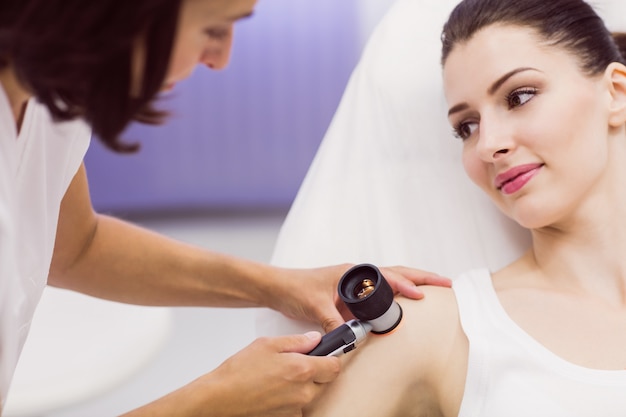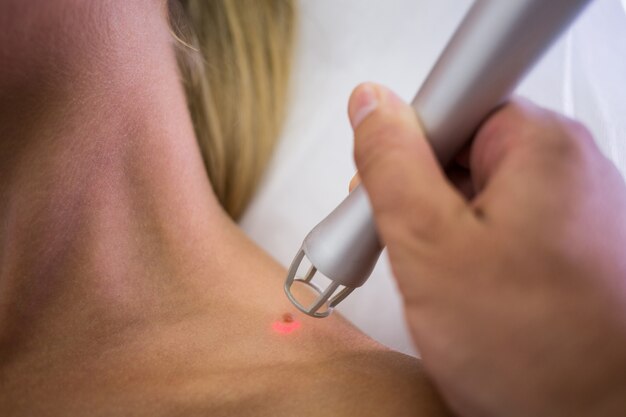Mole Removal Treatments in Abu Dhabi is a common procedure that many people consider for aesthetic reasons or health concerns. Moles, also known as nevi, can be benign or potentially malignant, making it crucial to choose the appropriate removal method. In this article, we will explore the various surgical options available for mole removal, their benefits, and considerations for each method.
Understanding Moles
Moles are clusters of pigment-producing cells (melanocytes) that appear on the skin. They can vary in color, size, and shape, and while most moles are harmless, some can develop into skin cancer. Regular monitoring of moles for any changes is essential, as changes can indicate potential malignancy. If a mole becomes asymmetrical, changes color, or exhibits irregular borders, it’s advisable to consult a dermatologist for evaluation.
Common Surgical Methods for Mole Removal
There are several surgical techniques for mole removal, each suited to different types of moles and individual patient needs. Let’s delve into the most common methods:
1. Excisional Surgery
Description: Excisional surgery is a traditional method where the mole is cut out along with a margin of healthy skin. The area is then closed with stitches.

Best For:
- Larger moles or moles suspected of being cancerous.
- Moles that require thorough examination and biopsy.
Advantages:
- Provides a complete removal of the mole, reducing the chance of regrowth.
- Allows for histological examination of the mole to determine if it is cancerous.
- Offers a definitive solution for moles that may pose a health risk.
Disadvantages:
- Recovery may involve some discomfort and swelling.
- Scarring is possible, especially for larger excisions.
2. Shave Removal
Description: In this technique, a dermatologist uses a sharp instrument to shave off the mole at the level of the surrounding skin.
Best For:
- Smaller, raised moles that are not suspected to be malignant.
Advantages:
- Quick procedure typically performed under local anesthesia.
- Minimal scarring since the mole is removed at the skin’s surface level.
- Quick recovery, with most patients returning to normal activities immediately.
Disadvantages:
- The mole may not be removed entirely, leading to the possibility of regrowth.
- Histological examination of the mole is not possible with this method.
3. Laser Removal
Description: Laser therapy employs focused light beams to target and break down the pigment in the mole.
Best For:
- Flat, pigmented moles or benign lesions.
Advantages:
- Minimally invasive with little to no scarring.
- Quick procedure, often completed within minutes.
- Short recovery time, allowing patients to resume daily activities almost immediately.
Disadvantages:
- Not suitable for deeper moles or those requiring biopsy.
- Potential for changes in skin pigmentation post-treatment.
- Multiple sessions may be necessary for complete removal.
4. Cryotherapy
Description: This method involves freezing the mole using liquid nitrogen, which destroys the mole’s tissue.
Best For:
- Small, superficial moles or skin tags.
Advantages:
- Quick and easy procedure with minimal discomfort.
- No stitches required, and recovery is usually swift.
- Effective for benign lesions without a risk of malignancy.
Disadvantages:
- Not suitable for larger or deeper moles.
- Possible changes in skin pigmentation or texture after treatment.
Choosing the Best Method for Mole Removal
Selecting the best method for mole removal involves several factors:
- Type of Mole: The characteristics of the mole, such as its size, shape, and color, can dictate the most appropriate removal technique. A dermatologist can help assess the mole’s nature.
- Location of the Mole: Moles in sensitive areas, such as the face or neck, may benefit from techniques that minimize scarring, like shave removal or laser therapy.
- Patient Preference: Some patients may prioritize quick recovery and minimal scarring, while others may prefer a thorough excision for peace of mind.
- Health Considerations: Patients with underlying health conditions, such as bleeding disorders, may need to take extra precautions when choosing a removal method.
- Professional Recommendation: Consulting with a qualified dermatologist or skin care professional is crucial. They can provide insights into the risks and benefits of each method based on individual health history and mole characteristics.
The Importance of Consulting a Dermatologist
Before proceeding with any mole removal, it’s vital to have a thorough evaluation by a dermatologist. This professional assessment helps determine whether the mole is benign or requires further investigation. The dermatologist can recommend the most appropriate method based on their findings, ensuring the best outcome for the patient.
Aftercare and Recovery
Post-removal care is essential for proper healing and minimizing scarring. Here are some general aftercare tips:
- Keep the Area Clean: Follow your healthcare provider’s instructions for cleaning the site.
- Avoid Sun Exposure: Protect the area from sun exposure to prevent pigmentation changes.
- Watch for Signs of Infection: Monitor the site for increased redness, swelling, or discharge, and contact a healthcare provider if any concerning symptoms arise.
- Follow-Up Appointments: Attend any scheduled follow-ups to monitor healing and address any concerns.
Conclusion
Choosing the best surgical method for mole removal depends on various factors, including the mole’s characteristics, location, and the patient’s preferences. Common methods such as excisional surgery, shave removal, laser therapy, and cryotherapy each have their unique benefits and considerations. Consulting with a qualified dermatologist is essential for assessing the mole and determining the most suitable removal technique. With the right approach, mole removal can be a straightforward and effective procedure, helping individuals achieve peace of mind regarding their skin health.
